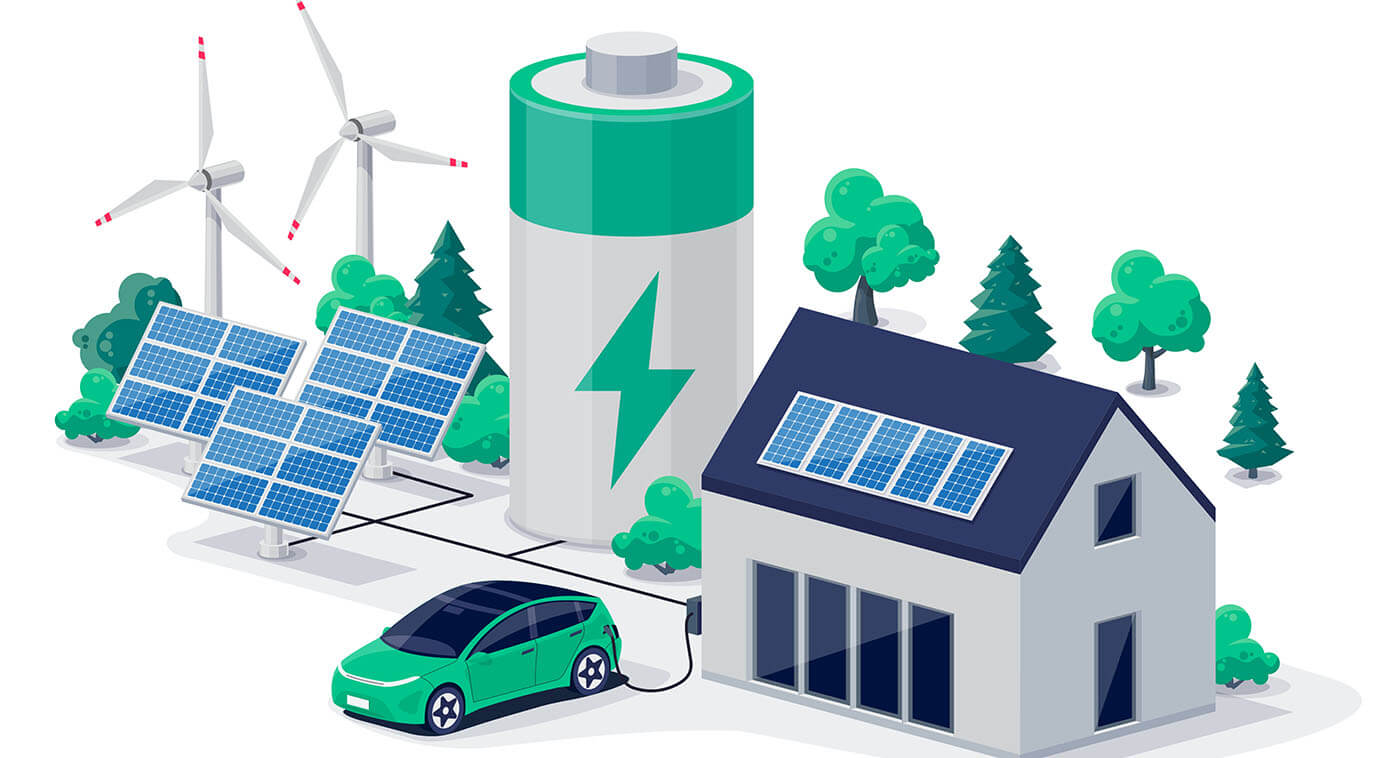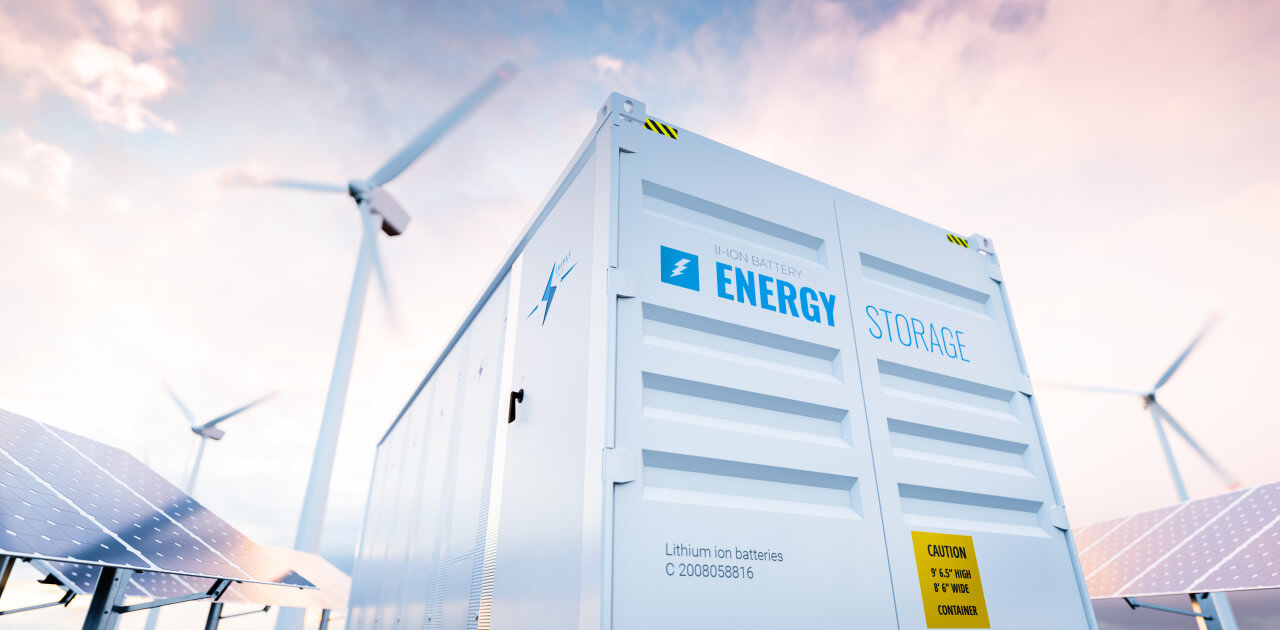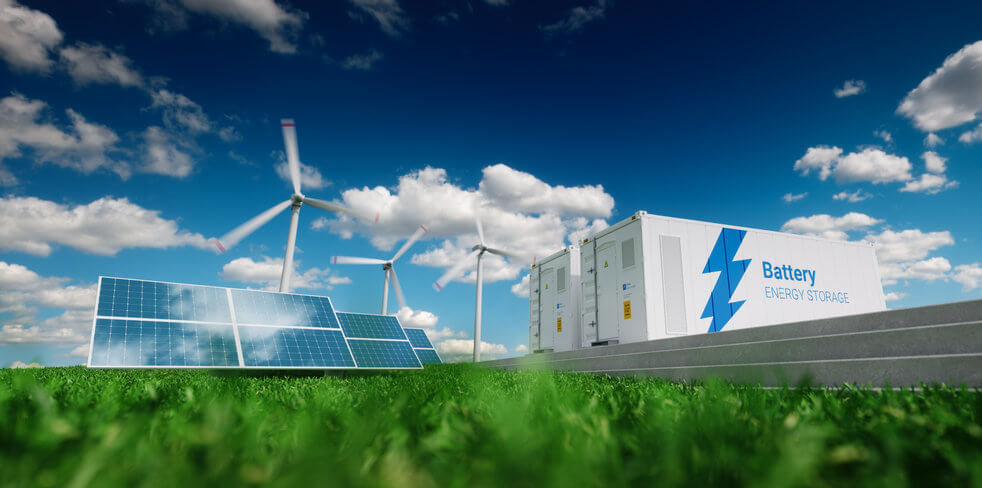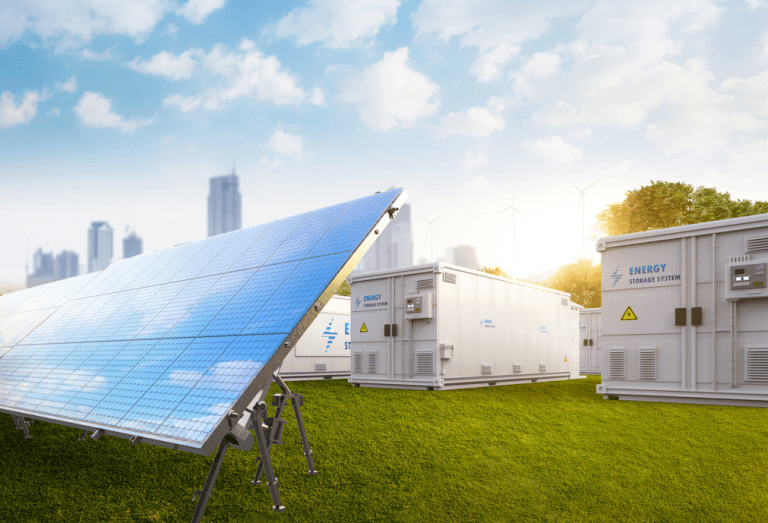A team of two can accomplish more than a single individual can. One such scenario involves the integration of solar power with battery storage. The main reason for this is that solar energy production does not always coincide with peak demand. Summer afternoons and nights, when solar energy generation is decreasing, are peak times for electricity consumption. During these hours, temperatures tend to peak, and daytime workers return home, cranking up the demand for electricity to power air conditioners, stoves, and other home appliances.
With storage, solar can still contribute to the grid even when the sun isn't shining. Furthermore, it can assist even out fluctuations in the flow of solar energy into the system. These shifts result from cyclical changes in the amount of sunshine available to photovoltaic cells and concentrating solar thermal power systems. Season, time of day, clouds, dust, haze, or impediments like rain, snow, or dirt can all have an impact on solar energy generation. Solar energy storage can be co-located with or positioned next to a solar energy system, or it can be a standalone structure; either way, it can aid in the efficient incorporation of solar into the energy landscape.

To minimize over-production and grid reliability difficulties, grid operators may "curtail" some generation if electricity can't be produced and used at the same time because of a lack of storage. On the flip side, there may be times of high demand for electricity but low solar generation, such as after sunset or on cloudy days. Enter storage, which can be loaded up at times of high generation and low power consumption and then released during times of high load or demand. If grid operators are able to store some of the energy the sun generates, they can use that power whenever it is needed, even when the sun has set. Storage can be thought of as a hedge against cloudy days.
When there is a blackout, solar panels will not keep your house running. If you want to keep your lights on in the event of a grid failure, you'll need to invest in a solar battery to store your excess energy. Because of the frequent occurrence of extensive power outages in states like California, energy storage is especially prevalent there.
Solar batteries are a more peaceful alternative to gas-guzzling generators for emergency electricity. Plus, solar panels provide usable energy without the need for recharging a battery; all you have to do is let them do their job.
You can reduce your reliance on the electric grid when you have solar energy storage. We already know that this will keep you safe in the event of a grid power outage, but it will also make you less dependent on the utility in general.
Solar energy storage, for example, shields you from the annual, nearly inevitable hikes in electric rates. You can save money by using a battery to power your home rather than the grid.
The source of your energy is also transparent to you. Power plants for utilities can use imported natural gas and oil as fuel sources. You may relax knowing that the sun is providing the energy to run your home.

Consistent power delivery is possible because to solar energy storage for shorter periods when generators are temporarily disabled by factors like passing clouds or scheduled maintenance.
In many areas, the utility rate structure known as net metering means that a solar battery won't provide any additional savings on electricity costs. If your home generates more solar power than it needs, the utility company will pay you the full retail rate for the power you don't use. You might think of the service as a "financial battery" that powers your life.
However, not all utilities provide full retail net metering and instead pay less for solar power that is produced in excess. This is where storing energy from the sun might reduce costs further for your monthly energy bills. Instead of sending your extra power to the grid, where it will be paid at a fraction of its retail value, you may save it and use it whenever you need it.
If your utility charges more for electricity during peak demand times due to Time-of-Use tariffs, solar storage could be useful. During these times, you can utilize your battery to power your home and avoid the high rates charged by the utility.
The majority of electricity for many American utilities still comes from polluting fossil fuels. This means that you are likely contributing to the combustion of fossil fuels for every kilowatt-hour of energy you use from your utility.
However, with solar energy storage systems, you can make the most of the renewable energy that your home relies on by utilizing all of the electricity that your solar energy system generates. By reducing carbon emissions and improving environmental conditions, we all benefit when we switch to solar power.
Take advantage of solar energy whenever it is needed rather than waiting for peak sunlight hours. Your capacity to use solar panels will not be affected by things like clouds, storms, or shorter days. If your solar panels produce less electricity than you need, you can always use what you have stored.
Anything from wildfires to extreme weather can cause interruptions and outages in the electrical grid. By decentralizing our source of energy, solar energy storage provides a buffer zone against catastrophic catastrophes.
When it comes to home solar installations, batteries are by far the most popular means of storing energy. A solar battery stores energy from photosynthesis via a chemical reaction between battery components. When a battery is depleted, the reaction is inverted, allowing current to flow out of the device. Most solar applications employ lithium-ion batteries, and the rapid development of new battery technologies bodes well for the future development of cheaper, more scalable battery storage options. By 2025, the U.S. energy storage market is projected to be valued $7.3 billion, indicating a sixfold increase from 2020 levels.

Water and molten salt are two examples of thermal energy storage materials that can absorb and store solar energy. The energy is then used, often to boil water for use in power plants, and the heated medium is kept in an insulated tank until then.
The mechanical storage of energy makes use of an object's potential energy to create electricity. Surplus electricity can be stored in the form of mechanical energy and then converted back into electricity at a later time using mechanical storage technologies. The three most common forms of mechanical energy storage are:
Flywheel. In this setup, a flywheel is charged with excess power and then quickly spins to produce electricity at times of high demand.
Pump Hydro. Water is pumped uphill to a reservoir above turbine generators in a pumped hydro system. When electricity is in great demand, the dams are opened and the water flows through the turbines.
Compressed air. Energy is stored by pumping compressed air into a large container, such as a tank or underground cavern. During times of high electricity demand, the air is released to power generators.
When it comes to storing energy generated by the sun, there is no simple answer. Solar energy storage options are flexible and may be tailored to your needs and budget. Let's have a look at some of the most prevalent methods of storing solar energy for both industrial and domestic settings.
Mechanical and thermal storage technologies are more affordable for utility companies and other industries than for individual houses. While the upfront expenditures of these storage systems may be substantial, they are essential for utilities to meet peak energy demands.
Battery technology advancements allow for grid-based energy storage. The number of new energy storage facilities in the United States set a record in 2020. There was a 240% increase in new storage capacity deployment in the third quarter compared to the prior record-breaking quarter. Even while most of the new installations are only one-hour FTM storage systems, they represent a hopeful glimpse into the future of commercial solar energy storage.
Pressurized air. Compressed air is the most cost-effective mechanical storage solution for large-scale applications, with the most recent government estimates putting its cost at $105/kWh.
Pressurized water. Pumping water uphill with excess solar energy creates a tremendous amount of potential energy. Pumped hydro is now the second-best choice for large-scale mechanical energy storage, with costs hovering around $165/kWh. However, because to the high initial costs and severe regulatory difficulties associated with new pumped hydro, it is only available in specific locations.
There are many advantages to installing solar panels on one's home, including increased reliability, lower energy bills, and the creation of distributed power sources (or "virtual power plants"). However, the aforementioned commercial energy storage solutions are probably out of reach for the typical homeowner. Fortunately, battery storage has developed to the point where it may provide households with an efficient and low-cost option for storing solar energy.
For domestic solar energy storage, lithium-ion batteries are the standard. They meet a variety of needs, are inexpensive (and increasing cheaper), and have a low profile. Saltwater batteries and lead-acid batteries are also prominent options for home use.
With a backup battery system, households can store energy during peak production and low demand (like during the workday) to use at peak demand and low generation. Small-scale solar energy storage systems offer the same reliability, uninterrupted power, and financial benefits as their larger-scale counterparts. The homeowner receives all the advantages.
Many solar-powered structures don't even bother storing excess energy because they use it all during the day while the sun is out. In this scenario, unused power is fed back into the mains supply. Solar-powered structures without backup batteries will switch to using other energy sources when the sun isn't shining or when clouds cover the sky. The question of how to store solar electricity for use when the sun isn't shining has been more prominent in recent discussions on sustainable energy, and the answer may be rather obvious: batteries.
Lead-acid batteries, lithium-ion batteries, nickel-cadmium batteries, and flow batteries are just few of the many battery types that can be utilized to store energy generated by solar panels. While many possibilities exist, lithium-ion batteries have emerged as the frontrunners. Batteries like these can be found in virtually any modern electronic device.
How then does the battery initially become charged? The anode side of a battery receives electrons whenever a device is plugged in. The battery is charged when the anode's free electrons lure lithium ions from the cathode. Lithium ions at the anode lose their electron source when the phone is disconnected, and they begin to separate from the electrons they had been attracted to. The energy needed to power your phone or computer comes from these stray electrons as they make their way through a circuit and towards the cathode.
The procedure for charging a battery with solar energy is very identical, with the exception of a few crucial extra steps. In this context, we're talking about photovoltaic solar, in which solar panels are used to generate power. The atoms of silicon used in solar panels are held together by their shared electron cloud. When a photon from the sun strikes a solar panel, it can dislodge an electron, allowing the panel to generate electricity. As a result of the aforementioned electric charge, this electron and the hole it leaves behind travel to opposite ends of the screen. The free electrons then create an electrical current as they go across a circuit.
A generator is an extremely inefficient, noisy, dirty, and fuel-consuming option. They have a short lifespan and can only supply power for so long. However, solar-powered battery packs don't pollute the air or create noise, and they last significantly longer than generators.
In addition to being smart home ready and having a 10-year warranty, solar-powered battery packs never need servicing or maintenance. The myth that solar panels can only produce energy during the daytime hours persists. With solar power battery packs, however, you can even keep your home powered during the night and in bad weather with solar energy.

Solar batteries, like any other kind of battery, will eventually need to be recharged. A fully charged solar battery has an average lifespan of 1–5 days.
The lifespan of solar batteries is exceptionally long, typically exceeding 20 years. The frequency with which your solar batteries need charging will vary depending on a number of factors such as the model and level of usage.
If you're subject to Time-of-Use tariffs or you reside in an area prone to blackouts, solar battery storage could be a worthwhile investment. Otherwise, solar batteries are still extremely pricey, making them out of reach for most people.
Solar batteries have several perks, but you need to measure them against the cost to see if it's worth it. In other words, solar energy storage is not a need but rather a convenient luxury.
Even if solar energy storage doesn't work for you, you can still expect to get significant savings from using modern solar panels. The installation of solar panels is now more cost-effective than ever, and it will have an immediate impact on your monthly power expenditures.
Solar energy is abundant and clean, but it can be difficult to capture. Fortunately, there are a variety of commercial and household storage options that have been proven effective for storing solar energy, and new technologies are always being researched in this area. Grid-scale battery storage is projected to become accessible in the near future, but until then, mechanical storage options provide viable solutions for commercial applications to harvest solar energy when it is most needed. Battery storage is the greatest option for home solar systems, and there are several reasonably priced options available. This combination of approaches provides a strong portfolio for storing solar energy and makes a strong case for increased solar deployment in both commercial and residential contexts.

扫码关注
We use cookies to understand how our audience uses our site.
Renon Power websites use cookies to deliver and improve the website experience. See our cookie policy for further details on how we use cookies. Privacy Policy